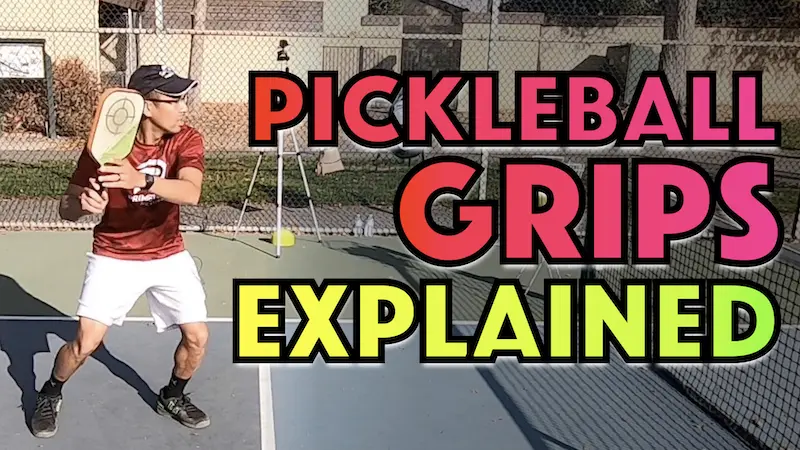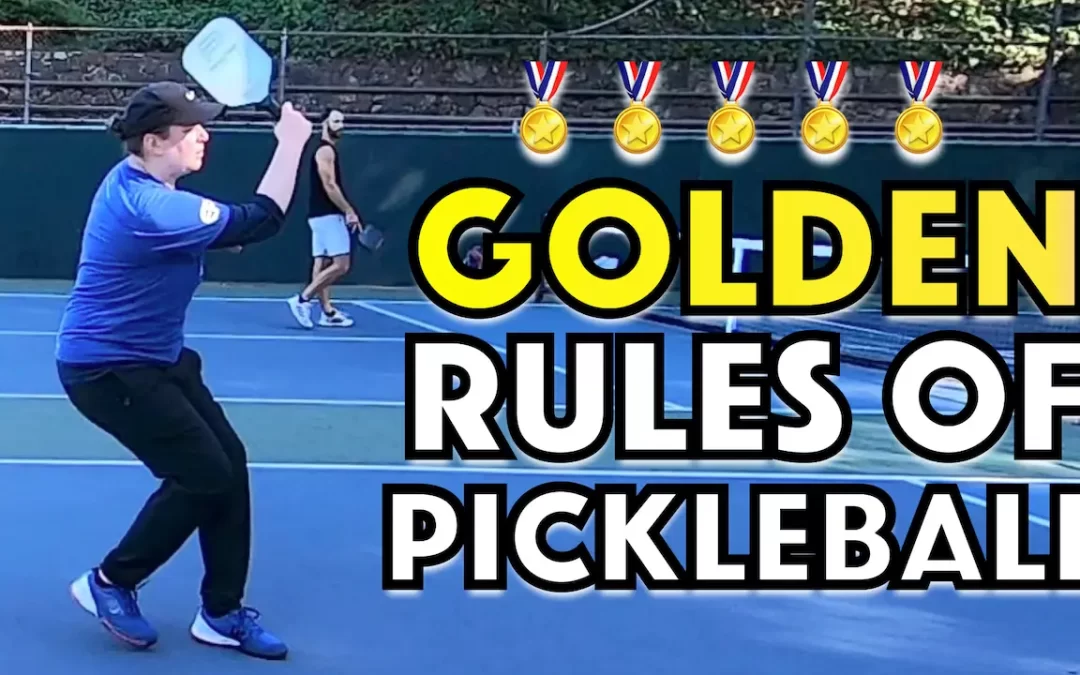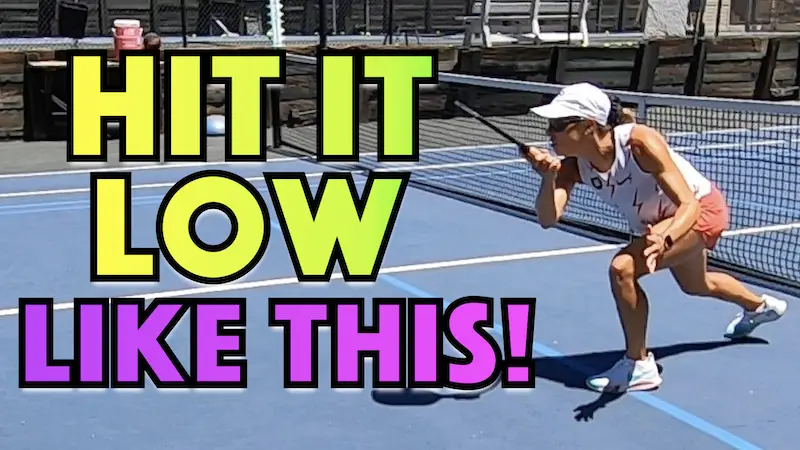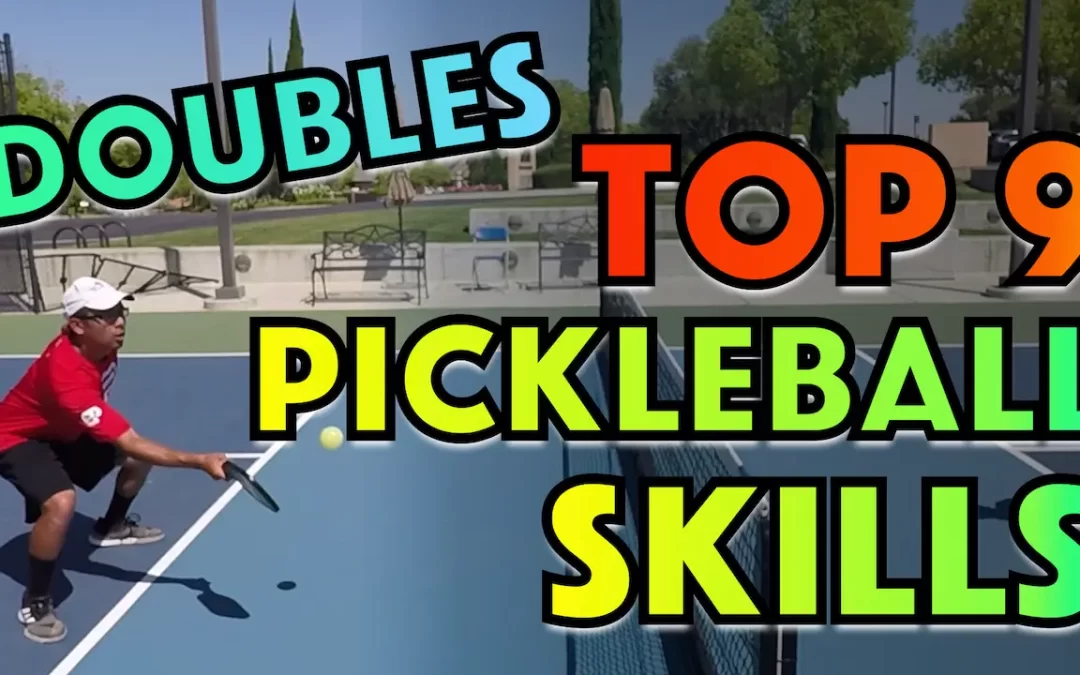Sometimes you’re up at the line and either you or you partner accidentally sends a popped up ball over to your opponents that puts you in quite a tough situation on the very next shot that’s coming back.
We’re specifically talking about the instance when it’s quite a bad pop and they are able to hit with a downward trajectory on you.
It’s going to happen no matter how good you are. You will cough up a high pop that just sits there and a massive attack is incoming.
In fact, it will probably happen a few times over the course of a game.
But, one of the main things that separates the best from the rest is their ability to handle this type of situation even though they are on the extreme defence at this stage of a point.
We’re going to break down the 5 big mistakes that many players make at this stage that’s killing their chances of turning things back around and what the best players do correctly that keeps them in the point with a chance to win it.
Kady Pooler
In the above video, you’ll see Kady Pooler. Kady is a former, highly ranked, Division 1, tennis player.
She has recently made the transition to pickleball having started to take it seriously earlier this year.
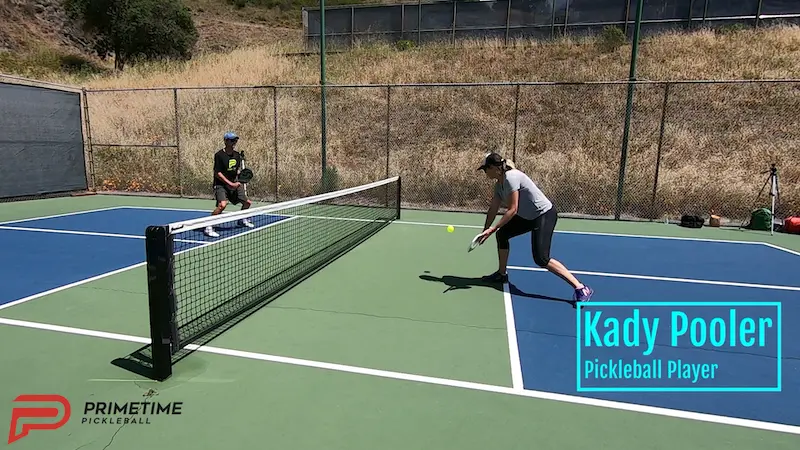
She’s already medaling at 5.0 events so clearly the transition is going well.
That really comes as no surprise for a few reasons.
She already comes with a high level of athleticism, paddle ability, court awareness and strategic understanding which continues to develop because of her extreme willingness to adapt and learn.
She’s extremely coachable and is always looking for that edge where she can improve and is willing to put in the work to get there.
This last point is arguably the greatest strength any pickleball player could have. If you have that willingness, you’ll go far, because you’ll do what it takes.
5 Big Hard Shot Defense Mistakes
We’re going to take a look at how Kady handles defending a high pop up that comes back hard so we can see how it’s done and correct the 5 big mistakes that most players make when in this very same situation.
Pickleball strategy is evolving at a rapid pace as the popularity of the game skyrockets.
Although many fundamental strategies remain, as they are tried and true, and will stand the test of time, boundaries are constantly being pushed and some old ways must make way for the new as they get tested and become proven winners over old strategies.
One of these “dinosaur strategies”, as I like to call them because they’re now extinct, is to “stand your ground at the line and never back up”.
So that brings us to to Mistake #1 which is….
Mistake #1 – Standing Your Ground At All Costs
This strategy makes no sense and never really did even though it was and sometimes is still spouted by well meaning coaches and fellow players.
There is no sport that I can think of where you don’t drop back in the court or the field in order to defend and give yourself time and space in order to absorb and diffuse the imminent attack.
You’re just a sitting duck if you stay up there and have very little chance of getting the ball back in a helpful way if you can see that a massive, full power, downward attack is coming your way.
You’ve giving yourself nearly zero time to react.
Now, if you find your current opponents most powerful shot is rather weak then by all means, stay up there if you’re not going to be pressed by it. You’ll do fine.
However, for the sake of this video, we’re going to assume they can bring some rather menacing power.
The smart thing to do is to buy yourself some time and back up. But, there’s a right way to do it and a wrong way to do it.
Many back up and are effectively “running away” from the shot while giving a half hearted defensive effort by kind of throwing their paddle at the ball.
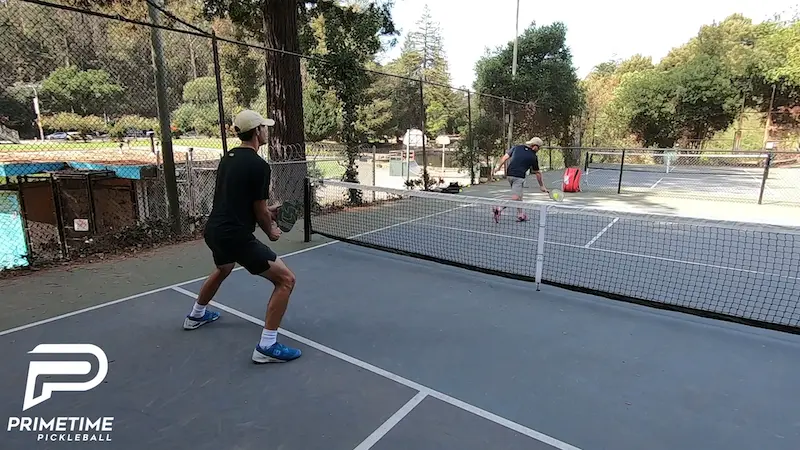
That’s not going to work, your odds of winning that point are nearly zero when you defending a hard shot in that way.
The correct thing to do is to back up quickly. Get balanced and get your legs under you before your opponent has made contact so you that you’re not falling back as you hit.
So that is key number one…drop back quickly and get yourself balanced with your body leaning slightly forward by the time you’re hitting the shot so that you’re meeting the ball and not running from it.
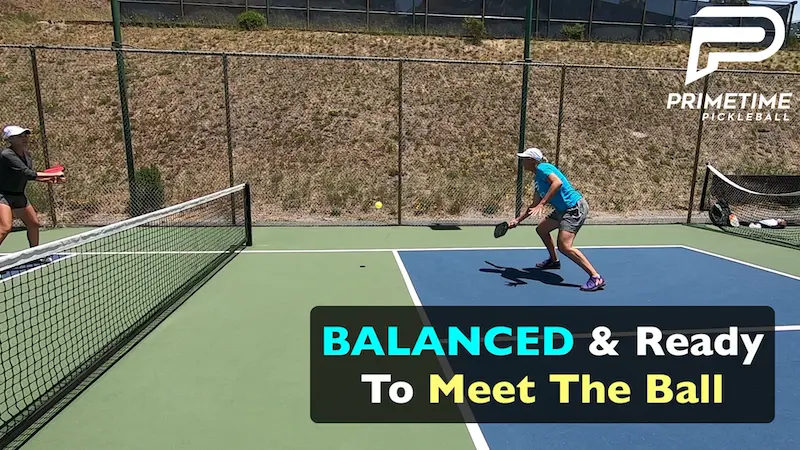
Everything else we’re going to cover is irrelevant if you don’t get this right.
This step mission critical. Drop back as far as you reasonably can while timing it right so that by the time they’re hitting, you’re balanced and set.
Mistake #2 – Standing Too Tall
This goes hand in hand with step #1 of dropping back and getting balanced.
One of the ways this gets messed up is that even if you do get back and get balanced, many players are simply standing too tall.
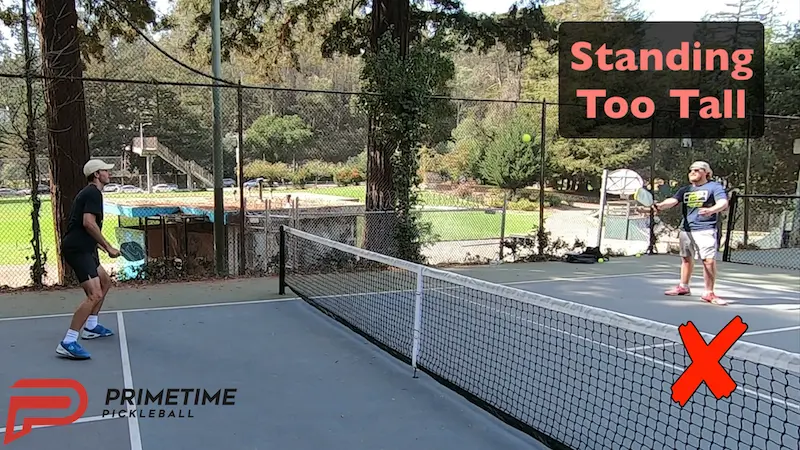
This works against you because a great majority of the time the ball is coming low.
If your opponents are smart, they’ll be hitting towards your lower legs or low and away.
Forcing you into a low contact is to their great benefit because it increases the chances that you’ll send it back to them high so they can keep attacking or have you miss it outright.
You’re going to be reaching down a lot to deal with these shots.
Also, you’re going to have a hard time if you have to move to retrieve the shot if you have no bend in your knee that is ready to give you an explosive step to get to the ball, should you have to move.
Another big benefit that is often overlooked but highly important is that you also need to get low in order to allow your body to absorb some of the pace from the incoming shot.
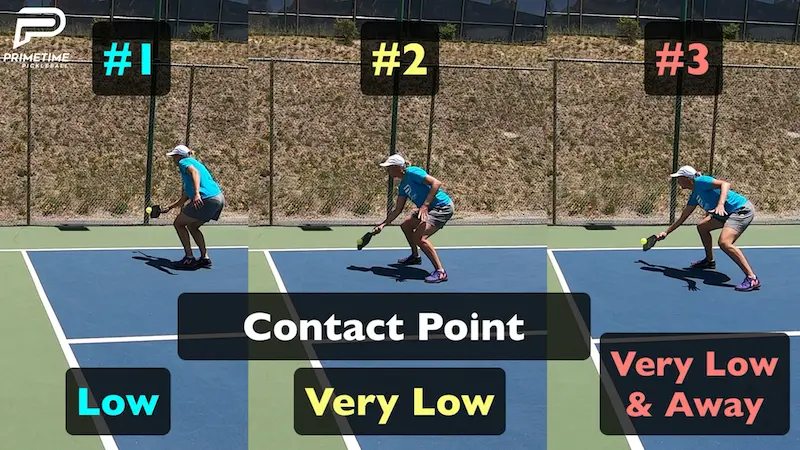
Players often struggle with defending because they fail to understand how to absorb pace from the ball.
Your knees need to be bent so that, in addition to other ways that we will discuss shortly, your lower body can assist in absorbing some of the pace of the ball.
You need to get low in order to deal with these hard attacking shots when you are further back in the court.
Have a 25% or so knee bend and a stance that is at least as wide as your shoulders.
So, drop back and sit, get that centre of gravity lower and it will really help your defensive game.
Mistake #3 – Too Much Swing
We often see too much motion happening with the arms on resets and blocking type shots. This can apply to too much backswing or too much follow through.
When you’re being attacked with a full force shot from your opponent you typically don’t need to move the paddle all that much. It should move not at all or very little.
Your opponent is already supplying nearly all the energy that is needed for the ball to get back over the net.
Your main job is to deflect it back at the right angle so that it clears the net and still drops in to the kitchen or at least creates a low contact point for them.
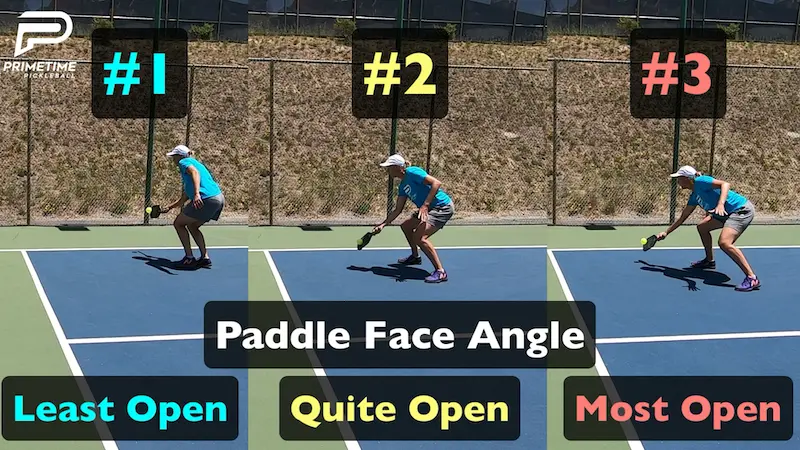
If they’re hitting an off speed attack like 60-70% off their max speed then you may need to push forward some and have a small motion with your arm but far too many players overdo it and are swinging way too much on blocks and resets. This will kill the shot.
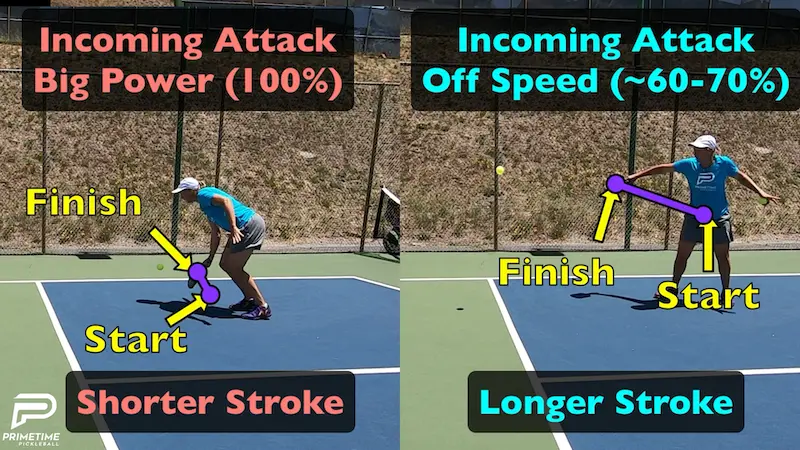
Now that we have that squared away let’s look at another mistake made with various parts of the hand and arm when defending these hard shots.
Mistake #4 – Overly Tight Arm & Grip
We hear a lot about an overly tight grip when it comes to blocking and resetting.
And it’s true, many people often have too tight of a grip during contact which produces too much rebound energy onto the ball and the ball rockets off your paddle and goes higher, harder and deeper than you would like leaving you exposed to repeated attacks.
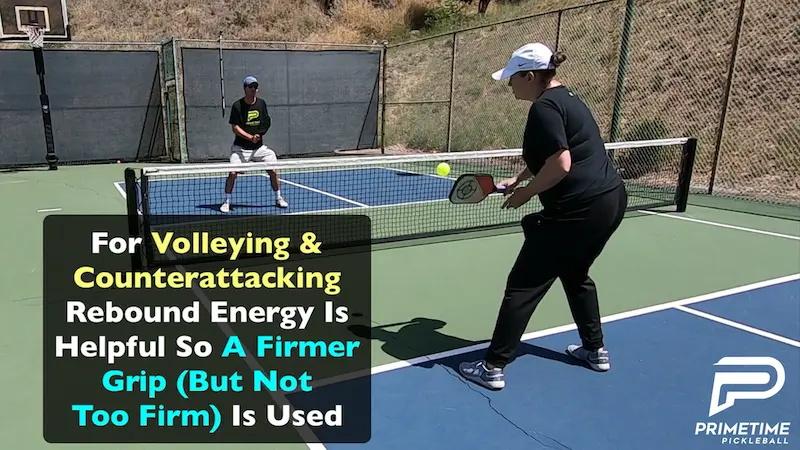
So yes, loosen up that grip.
Grip it enough to keep the paddle stable but loose enough to let your hand absorb some speed of the ball.
But, it doesn’t stop there.
In order to achieve a looser hand, your whole arm, starting from your shoulder, needs to be on the looser side as well so that it too can help absolve some pace.
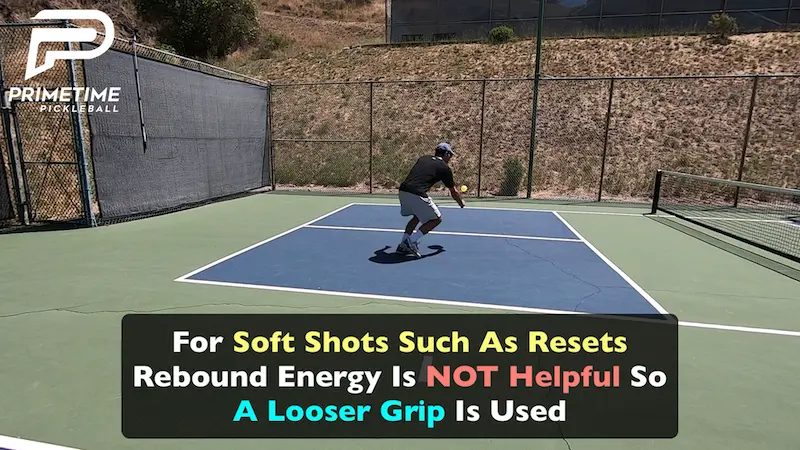
And remember when we talked about the bent knees?
Your whole body is involved in absorbing some pace off the ball, it’s not simply the looser grip that accomplishes this.
Strike a balance between acting as a wall off which the ball bounces with enough softness in your body to absorb the necessary pace off the ball.
The correct paddle angle face plus the right amount of looseness in order to soften the shot up are the keys to successful blocking.
And it comes down to feel. Knowing this alone won’t get you very far so you’re going to need to train this relentlessly to master it.
Everyone needs to figure that feel out for themselves. No one can tell you that. You simply have to go out there and rep and rep and rep until you feel it.
Now this dovetails right into our next mistake which is…
Mistake #5 – Non-Specific Training
I’m a big fan of drilling.
I’m a huge fan of working on defending hard shots with resets and one of the simplest ways to do that is starting from the transition zone, staying there and continuously resetting from there. That will get you very far, and yes, it will help you with this skill.
But, what you’re missing here with this drill is building the skill of backing up, defending with a reset with the goal of then following it back in.
You’re missing out on timing your split step right, on rebalancing yourself and successfully transitioning your backwards momentum, to neutral, to forward, and all the other nuances in between that make this a unique skill set when you combine all the parts together.
In the video, you’ll see that Kady starts at the line and feeds a simulated pop up and then gets to work on how she would defend it.
This is what I would recommend to make this more realistic and bring much more specificity to your training which does a far better job of building the exact skill you’re after.
Final Thoughts
Resetting and blocking hard shots is arguably one of the hardest, if not the hardest, skill in pickleball.
Pros routinely state that this skill is the one they train the most by far.
You too should place a great emphasis on training blocking and resetting. Having great defense is a huge asset so get out there and get to it.
Happy Pickeling!


